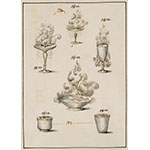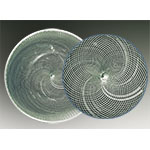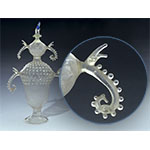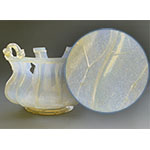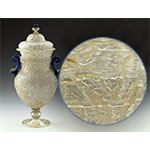The vases and glasses in the Accademia del Cimento glassware collection display highly specific patterns. These can be found in contemporary documents, and some were typical of Venetian glassmaking. They largely consisted of tableware and palace ornaments. In consequence, some were used for scientific purposes as vessels for substances in experiments.
Also called redeselo glass. Variety of filigree glass in which the decorations are formed by rods in a double-weave pattern. Made in Murano from 1549 onward.
Style of glassware dating from the early seventeenth century and inspired by the vogue for fanciful and bizarre artifacts. Produced in Venice but more commonly elsewhere, as in Spain. Also documented in Tuscany from 1617, when Grand Duke Cosimo II de' Medici (1590-1621) established the small glasshouse in the Boboli Garden for manufacturing drinking glasses.
Milky white opaque glass (from latte, milk), very similar to porcelain. Pioneered in Venice in the first half of the sixteenth century.








